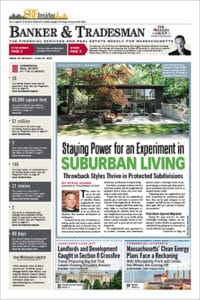
Gayle Blakely Farris is president of Forest City Commercial Group?s Boston division, a $4.5 billion diversified national real estate company.
We live in an increasingly multidimensional society where the lines between work, leisure activities, home and office are blurred. Successful mixed-use development requires planning that takes into account the contours of multitasking and quality of life issues of employees, while meeting the rapidly-changing office and R space needs of high-tech companies bound to advances in technology that confound scientists and economic forecasters alike. The concept of creating a community within a community and a ?there, there? destination must be the driving force behind any successful urban development. Planning such developments demands vision and foresight, and also constant attentiveness to the growth of the physical, economic and cultural community surrounding and within the development.
The pace of change in today?s marketplace requires that developers build flexibility into their master plans and provide excess mechanical and electrical capacity in each building. We need to keep in mind that we are creating spaces that will need to maintain their value today and well into the future. There is no mistaking that the stakes for developers today are much higher than they were a decade or generation ago. Working in real estate in the1970?s, meant working with clients with commercial interests as diverse as law, medicine, finance and consulting. Today it also requires meeting the needs of companies whose workday concerns include photonics, fiber optics, wireless data technology, and the human genome. But regardless of a development?s predominant user base, there are certain factors that are integral to a vibrant mixed-use development:
Diversity
The whole must be greater than the sum of its parts. The challenge in creating a vibrant community is to find complementary office, residential, hotel, and retail users that will weave together an environment where people can live, work, shop, and spend their leisure time. Just as the most successful communities grow when people of diverse backgrounds and interests interact as parts of a whole, mixed-use developments work best when they are active 24/7.
During the planning process, developers must work with community and governmental leaders to balance the needs of the surrounding community with the physical and economic realities to achieve success. To accomplish this, the project should continue the existing street grid and create building heights which compliment the existing neighborhood. Even in a predominately commercial development, the addition of residential units is one of the best ways to weave the fabric of the mixed-use development with the neighborhood.
Open Space
While the mix of uses within a development is key to its success, an equally important component of a development is the creation of parks, landscaping and a pedestrian path system inter-connecting the campus and providing gathering spaces for residents and workers alike. Good planning creates active open spaces, made alive through a network of trees, park benches, public art and fountains, which are whimsical enough to also attract children. Open spaces need to be maintained, supervised and well lit in order to create a ?safe? feeling. If the space is not made to feel inviting, programmed with organized and impromptu events, and alluring at all times, the area will see little use.
In the Boston market, University Park at MIT is often cited as an example of successful mixed-use development and collaboration between a private developer and academic institution. It has incorporated residential units into a predominately corporate campus that includes a hotel, retail, open space and other amenities. It was done with extensive community planning and input and the end result is remarkably similar to the original master plan.






